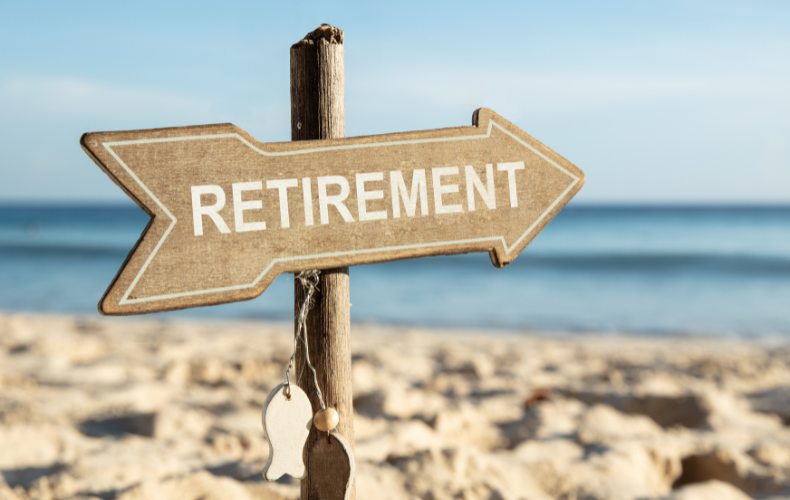- admin
- June 7, 2024
- No Comments
Retirement Planning
Planning for retirement is an important part of managing your money because it helps you keep your lifestyle and financial independence after you stop working. To properly plan, you need to know about retirement accounts, come up with good ways to save money, and set reasonable deadlines. Planning for retirement can help you have a safe and comfortable future. This article gives you all the information you need.
Importance of Retirement Planning
Planning for retirement helps you get ready for a time when you won’t be getting paid every week, making sure you have enough savings to cover your costs. A well-thought-out retirement plan helps you keep the lifestyle you want, handle unexpected costs, and feel safe knowing you have enough money to live on.
Benefits of Early Retirement Planning
- Financial Security: Makes sure that you have enough money to live on.
- Reduced Stress: Knowing you’re ready gives you peace of mind.
- Greater Flexibility: There is more freedom because you can retire when and how you want.


Understanding Retirement Accounts
401(k) Plans
A 401(k) is a retirement plan offered by your employer that lets you save money before taxes, which lowers the amount of money you have to pay taxes on. A lot of employers will match your contributions, which can help you save a lot more for retirement.
- Contribution Limits: The maximum contribution is $20,500 as of 2023. People aged 50 and up can make an extra $6,500 as a catch-up contribution.
- Tax Benefits: You don’t have to pay taxes on contributions, and earnings grow tax-free until you take them out.
Individual Retirement Accounts (IRAs)
IRAs are personal retirement accounts that help you save money by giving you tax breaks. There are mainly two types:
- Traditional IRA: Donations may be tax-deductible, and earnings grow without being taxed right away. When you retire, your withdrawals are taxed as regular income.
- Roth IRA: You put money in after taxes, but when you retire, you can take money out tax-free.
SEP IRAs and SIMPLE IRAs
These accounts are made for small business owners and people who work for themselves. They let you put in more money and get tax breaks.
- SEP IRA: Employers can put up to 25% of an employee’s salary or $61,000, whichever is less, into a SEP IRA.
- SIMPLE IRA: Has higher contribution limits than the SIMPLE IRA, but both the employer and the employee can contribute.
Effective Savings Strategies
- Start Early
The earlier you start saving for retirement, the more time your money has to grow. Compounding interest can significantly increase your savings over time. Aim to start saving in your 20s or as soon as you begin earning a steady income. - Maximize Contributions
Take full advantage of retirement account contribution limits. Max out your 401(k) contributions, especially if your employer offers matching contributions. Similarly, contribute the maximum amount to your IRA each year. - Diversify Investments
Diversification is key to managing risk and maximizing returns. Spread your investments across various asset classes, including stocks, bonds, and real estate. This strategy helps protect your portfolio from market volatility. - Automate Savings
Set up automatic contributions to your retirement accounts. This ensures you consistently save a portion of your income and reduces the temptation to spend money elsewhere. - Reassess and Adjust
Regularly review your retirement plan and make adjustments as needed. Changes in your financial situation, goals, or market conditions may require you to tweak your savings strategy.


Timelines for Retirement Planning
- 20s and 30s: Building the Foundation
Focus on building a strong financial base in your 20s and 30s. Start putting money away for retirement, use plans offered by your employer, and put your money into a diversified portfolio. Set up good money habits, like making a budget and staying out of debt that you don’t need. - 40s: Maximizing Growth
Your 40s are a very important time to start saving for retirement. Make more contributions, use catch-up contributions if they’re available, and keep spreading out your investments. Pay attention to increasing your wealth while minimizing risk. - 50s: Preparing for Retirement
As you get closer to retirement, you should focus on keeping your money safe and making sure you have enough saved. Reevaluate your retirement plans, make a rough estimate of your costs, and change how you invest to lower your risk. You might want to talk to a financial advisor to help you improve your plan. - 60s and Beyond: Transitioning to Retirement
Start getting ready for retirement when you are in your 60s. Look over your Social Security benefits and figure out when you should start getting them. Plan how you will take money out of your retirement accounts so that you have a steady flow of money coming in. Keep an eye on keeping a well-balanced portfolio that gives you both growth and income.
Conclusion
Planning for retirement is important if you want to be financially stable and independent in your later years. You can make sure you have a comfortable and stress-free retirement by learning about retirement accounts, coming up with good ways to save money, and sticking to a clear schedule. Start making plans right away, stick to them, and look at them often to make sure they still work with your current situation. You can look forward to a safe and happy future with a well-thought-out retirement plan.







